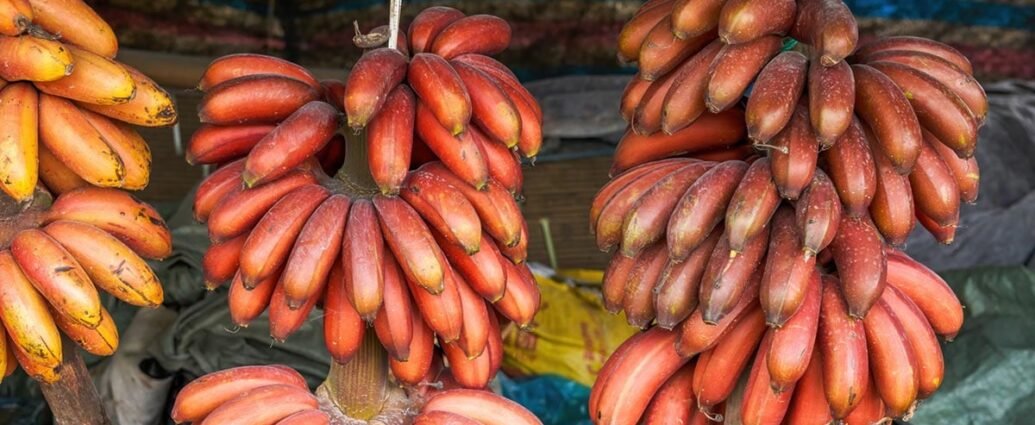More and more exotic fruits can be bought in supermarkets or fruit shops, and, on this occasion, it has arrived, treading heavily on the red banana. This fruit is grown in the Canary Islands, banana-producing islands par excellence, but it has been popularized on the peninsula recently.
The traditional banana of the Canary Islands is a Cavendish variety; on the other hand, red belongs to the varieties Cuban Red, Jamaican Red, and Spanish Red, another remarkable difference in addition to the showy color.
What does a red banana taste like, and how to eat it?
Its appearance is very striking, as the skin is bright reddish purple and has a very soft texture. The skin is thicker than that of a yellow banana; it is also smaller, and the pulp oscillates between pale pink and yellow. The most curious feature of this fruit is found in the flavor, it is juicier, sweeter, and with a very subtle aroma reminiscent of raspberry or red fruits.
These types of bananas can be eaten raw, just like yellows, but they can also fry or roast to accompany both sweet and salty dishes. Your optimal consumption moment is when your skin has a red hue pulling brown.
Red bananas are a little more expensive than traditional bananas because their production is small and their harvesting is more expensive. The price is about €3.20 per kilo compared to 1 euro, with little than the conventional one costs.
What is the origin of the red banana?
This variety has been cultivated in the Canary Islands for decades, where it arrived in 1982 from Martinique (French Antilles), at the initiative of the Canary Institute for Agricultural Research (ICIA). Like all bananas and bananas, red also comes from Southeast Asia (between India and Malaysia). It is very common in Latin America, where it is known with names such as colored banana, red banana, purple guine or taffeta.
Although it has recently become popular on the Iberian peninsula, it is also cultivated in areas to the south such as Alicante, Almería and Granada, where the plant has adapted very well due to climatic conditions.
The benefits it brings to the body
Nutritional value (by 100 g)
– Calories: 90
– Proteins: 1 g
– Fat: 0.3 g
– Carbohydrates: 23 g
– Potassium: 350 mg
– Magnesium: 27 mg
– Fiber: 3 g
– Vitamin C: 8.7 mg
– Vitamin B6: 0.6 mg
As for its nutritional value, it is a powerful antioxidant rich in vitamins C and B6, essential for the proper functioning of the body and to strengthen the immune system.
It also contains fiber and potassium, good for digestion, to alleviate gastrointestinal problems, to keep the cardiovascular system in shape. Along with magnesium, it calms anxiety and stress, it relaxes and produces satiety at the brain level.
- The Health Benefits of Turmeric Milk
- The Truth About Banana Sugar Content
- 3 Magnesium-Rich Smoothies To Take Care of Your Health
